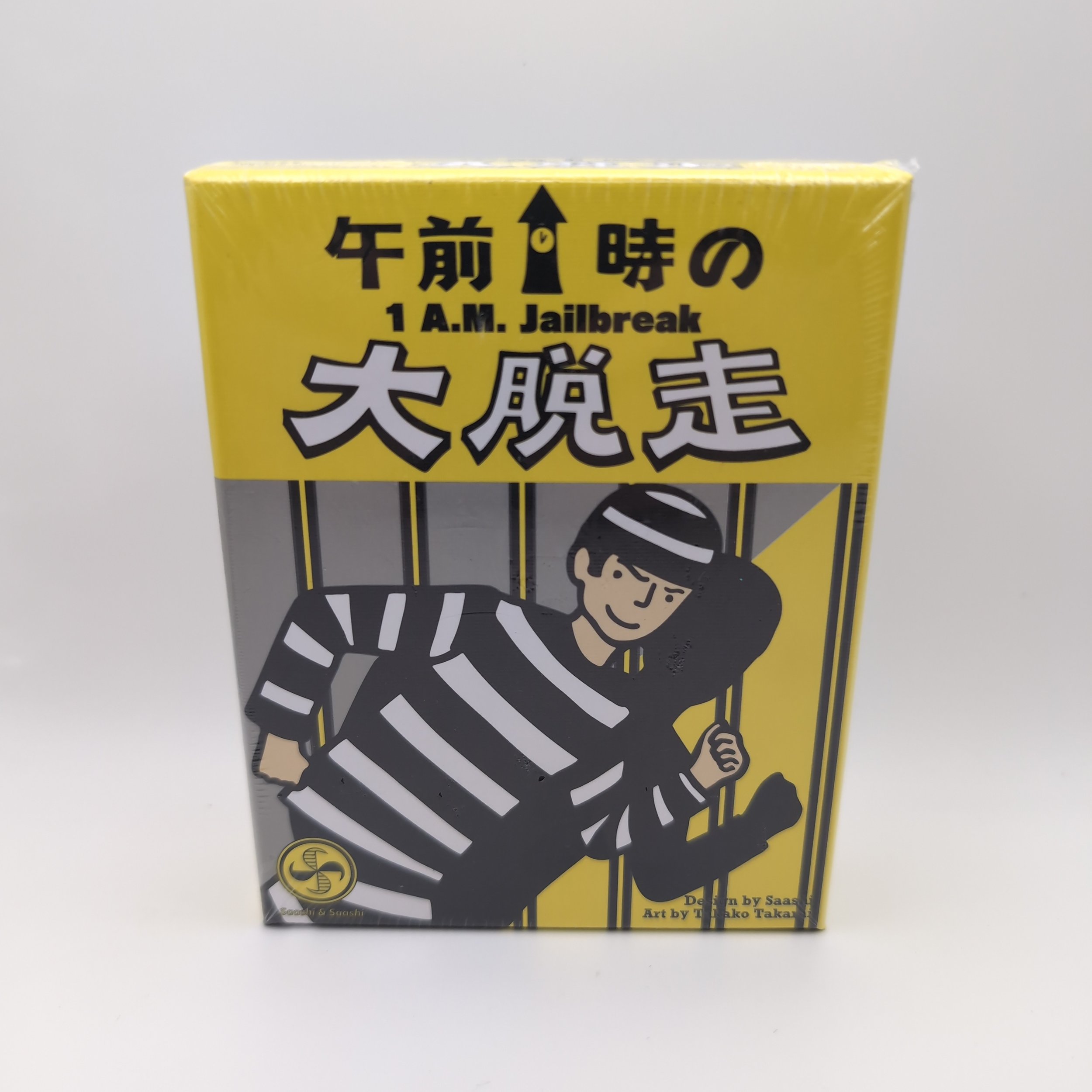 Image 1 of 1
Image 1 of 1


1 AM Jailbreak (IMPORT)
In 1 A.M. Jailbreak, you want to help prisoners gain their freedom...from your hand. Yes, you have a hand of prisoner cards, and you want to send them through the tunnel so that no one remains behind.
In more detail, from a deck of cards numbered 1-8, with leaders having a value of your choice when you play them, each player starts with a hand of twelve cards and five cards are randomly dealt face up into the "cell", an area near the deck.
On your turn, if the "tunnel" — an area in the center of play — is empty, you can play 1-3 cards. If you play more than one card, those cards must be the same value or in sequential order. (If you play a leader, declare its value if it's not obvious.) If the tunnel isn't empty, you may play the same number of cards as the previous player or one card more or fewer. If you can't play the proper number of cards or don't wish to, you pass, moving all cards in the tunnel to the discard pile.
After passing, draw two cards, whether from the deck, the cell, or a combination; if you played, draw one card, after which you can draw one more, if you wish. (Refill the cell to five cards, if needed.)
One wrinkle to what's above: Before you play or pass, you can "shoot ahead", that is, add one card to the cards placed in the tunnel by the previous player, adding the same number if they played a set or adding a card to either end of their run. By doing so, you ditch one more card and give you a larger set to play off of.
If you empty your hand, you don't draw and skip all future turns. When 1-2 players have "broken out" — or daybreak comes at the bottom of the deck — the round ends; everyone with cards in hand scores points equal to their hand size. After three rounds, whoever has the lowest score wins.
In 1 A.M. Jailbreak, you want to help prisoners gain their freedom...from your hand. Yes, you have a hand of prisoner cards, and you want to send them through the tunnel so that no one remains behind.
In more detail, from a deck of cards numbered 1-8, with leaders having a value of your choice when you play them, each player starts with a hand of twelve cards and five cards are randomly dealt face up into the "cell", an area near the deck.
On your turn, if the "tunnel" — an area in the center of play — is empty, you can play 1-3 cards. If you play more than one card, those cards must be the same value or in sequential order. (If you play a leader, declare its value if it's not obvious.) If the tunnel isn't empty, you may play the same number of cards as the previous player or one card more or fewer. If you can't play the proper number of cards or don't wish to, you pass, moving all cards in the tunnel to the discard pile.
After passing, draw two cards, whether from the deck, the cell, or a combination; if you played, draw one card, after which you can draw one more, if you wish. (Refill the cell to five cards, if needed.)
One wrinkle to what's above: Before you play or pass, you can "shoot ahead", that is, add one card to the cards placed in the tunnel by the previous player, adding the same number if they played a set or adding a card to either end of their run. By doing so, you ditch one more card and give you a larger set to play off of.
If you empty your hand, you don't draw and skip all future turns. When 1-2 players have "broken out" — or daybreak comes at the bottom of the deck — the round ends; everyone with cards in hand scores points equal to their hand size. After three rounds, whoever has the lowest score wins.
